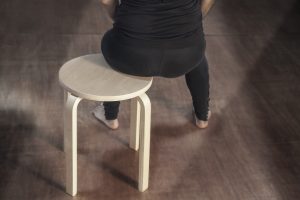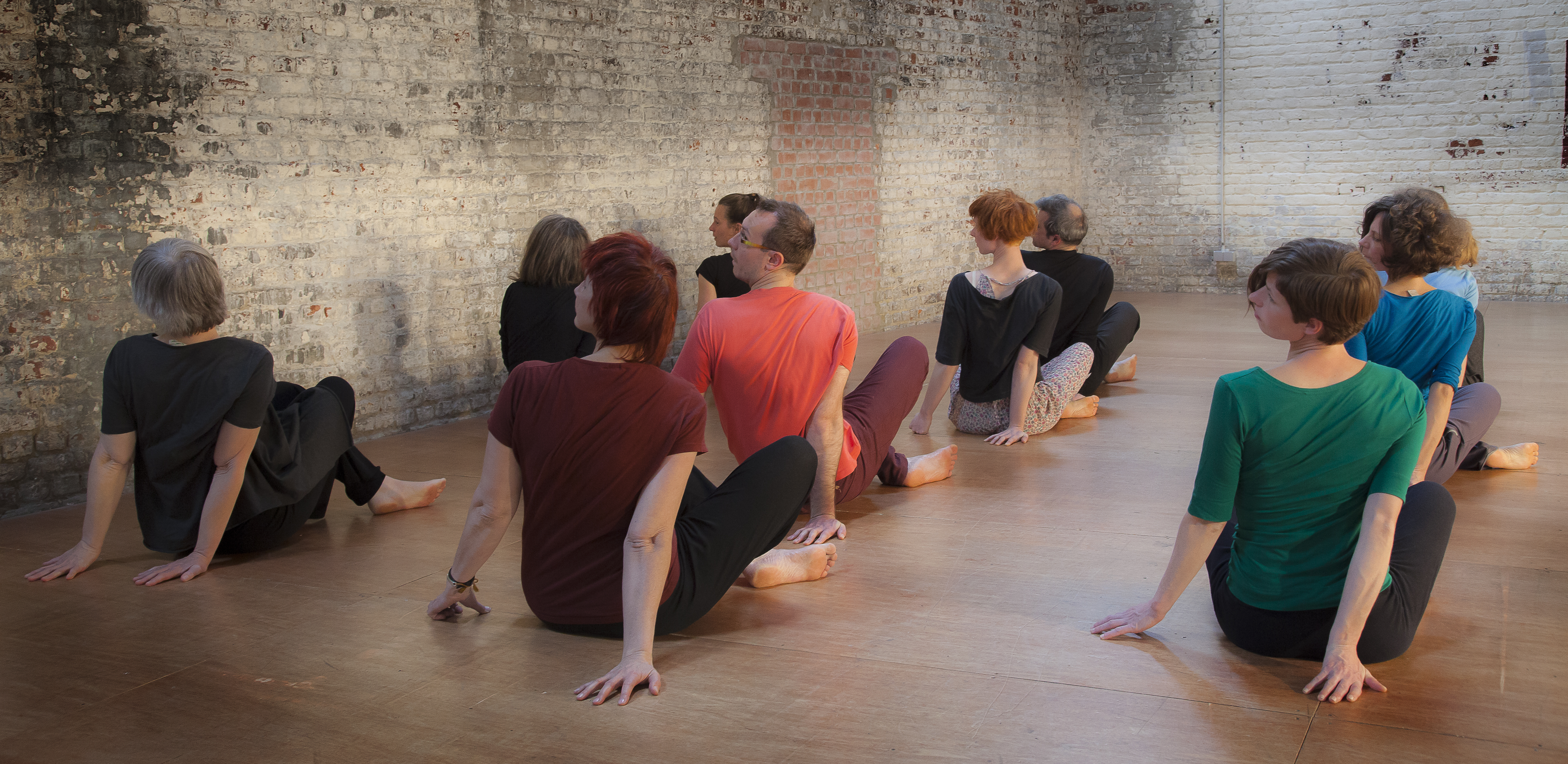“Every great and deep difficulty bears in itself its own solution. It forces us to change our thinking in order to find it.”
Pain is something of an issue for teachers of the Feldenkrais Method. First of all let me say we really are teachers, despite the apparent therapeutic nature of lying down on a table and being physically reorganised and reintegrated with awareness and sensitivity. Moshe Feldenkrais was very clear on this, although not all of those who practise his method share his clarity. He died while in the process of formulating an effective training program and we have been arguing about the parameters of our work ever since. We exist as one approach to a whole host of problems that have many differing potential solutions, and most of our ‘competition’ promises easier, more immediate solutions to those problems than we do.
People don’t usually think about their physical problems the way we do – no one really says…
“I am starting to suffer from lower back pain every time I sit at the computer for more than a couple of hours – I must find someone who can teach me how to use movement as a way to expand my kinaesthetic awareness, in order to enhance my ability to make creative choices about a) how I do what I do, b) how much of it I do, and c) whether I might actually want to do something completely different instead”.
Feldenkrais aligned his teaching process with helping people to achieve full adult maturity, and called it living your “avowed and un-avowed dreams”…but then he was more of a romantic than many people acknowledge.
What Feldenkrais teachers do all agree on is that we can work more quickly and easily with people who are not in pain; unfortunately most people only think of coming to us once they are in pain, and then all too often they either feel better quite quickly, and disappear again, without fully integrating the changes they have made to their way of going about their daily lives, OR they don’t feel better all that quickly, and then they lack the incentive to stick with the process until they do begin to feel the beneficial effects of their increasing self-awareness and self-development in their life experience.
The people who get the most out of Feldenkrais are the ones who commit – but then of course that is true of all the alternatives as well. A person may commit because the pace of improvement matches their involvement in a way that makes clear sense to them, but more often it is simply that they recognise that the Method suits their nature, and that becoming a more aware, more fully-matured person is already one of their goals.
It was frustrating for me to discover that people were just as likely to halt the learning process early because they were out of pain after a couple of lessons, as – of course! – a couple of hours is rarely long enough for a whole new way of being to establish itself.
Part of the reason for this is that it is natural to experience the pain as if it is the actual problem, even when good sense might tell you that in reality your pain is the signal your nervous system is generating to make you aware that there is something deeper going on.
If pain is like the check engine light on your dashboard, then you may be able to turn it off with a bit of quick ‘maintenance’, but, if the problem is being generated by a deeper ongoing issue, then sooner or later that warning light will come back on again. Relying on pain killers is like removing the bulb for a few hours at a time; medication may ease the pain but it does little or nothing to prevent pain returning, or your underlying issue from worsening – although of course in the short term medication can be very useful to enable important activities like earning a living, and getting some sleep.
So the pain is there to tell you something – but what exactly?
Sciatica and my ongoing learning process…
When a new client appears complaining of sciatica I am pretty confident that I can be of use because, of the myriad kinds of pain we are all dealing with as modern, urban humans, sciatica is especially well-suited to the whole self re-organising approach.
My relationship with this particular warning light has been life-changing in a very literal sense. My first experience of Feldenkrais was a day workshop that included both group work (Awareness Through Movement) and a brief individual lesson (Functional Integration). Very much as luck would have it, I limped through the door in the morning and strode out pain-free at the end of the afternoon. I had been experiencing short bouts of acute sciatic pain over several years; the pain and the movement difficulties would usually last about a week, but this latest attack was over less than 24 hours after it began. Here’s the luck part; it took me several years, but eventually I made the connection that if I hadn’t been in pain on that day I might not have realised just how perfect the Feldenkrais Method was for me personally. As it was it took me less than a week – a week when usually I would have been limping everywhere, and struggling to climb stairs with one leg straight – to decide to become a Feldenkrais teacher.
Sciatica has been a reliable teacher of mine for much of my adult life. Until a couple of years ago I thought I had it under control, and then two weeks of flu and relative immobility brought it back into my life. Of course I was delighted to get a chance to figure out why my old friend was back and what it had to teach me this time around…
So let me share with you what I have learned so far: your own pains may be teaching you similar things, or they may have entirely different messages for you; don’t ignore them, give them the respect and attention they require to help you embark on the task of healing yourself.
Pay attention to the warning signs
Pain is what your brain uses to tell you that you have a problem that requires attention and action. My sciatica appeared after I had refused to recognise that my frequent injuries in dance classes were a sign that something needed to change in my treatment of myself.
Keep moving

This is common knowledge with sciatica fortunately, even your doctor will tell that movement is more effective than bed-rest. My first proper discovery came when I used a side-bending-in-sitting action as an emergency treatment for sciatica brought on by lugging heavy bags around London on my way to Edinburgh. Next I realised that exaggerating this side-bending movement in my walking gait as soon as I felt a twinge gave me a way to prevent an attack from fully developing – by then I was learning to respect those early-warning signs. Walking in a well-organised way can be an effective method of pain control and is definitely a great way to improve both your posture, and the health of your spine.
Pain is a great stimulus to self-awareness
Habits are really useful to us, until they’re not. Functioning on automatic pilot can free up more of the brain for thinking about other stuff, so it isn’t surprising that wandering about in a daze is associated with the absent-minded professor archetype. Feldenkrais isn’t the only self-improvement process that focuses on increasing awareness, and the relationship between attention to what is actually going on “in the moment” and attention to our sensory perception is well established in many meditation and mindfulness techniques. Pain demands attention, and it can be a great stimulus for better self-use. My sciatica always used to remind me not to stoop when bending over the sink to brush my teeth. It taught me to walk with a mobile pelvis, and fidget whenever I am sitting for too long.
The previously mentioned downside to this is that attention to important self-care can drift when the pain eases, so…
…Rehab should not stop just because the pain has gone away…
…and there is another aspect too, particularly true of chronic pain, that it can bring about the paradoxical situation, that we may find our physical selves such a source of discomfort that we stop paying attention to our body’s feedback altogether. Self-medication with alcohol and cigarettes and eating sugar for comfort are some of the many behaviours available to help that can enable us to deaden our sensitivity to the incoming information from our nervous system that something is not ok. This deeper aspect of self-recognition took much longer to surface for me, and it turned out to be a firmly established element of my nature, and thus a much more difficult habit to unlearn. I think this aspect of my self is the reason for my fibromyalgia, a different kind of warning light, and one that demands more global changes to my way of being that my sciatica did. Diet, lifestyle, compulsive thoughts and actions – all of these elements need to be examined when these kinds of chronic conditions emerge.
I wrote this article originally in 2012, it is now January 2019 and I have a lot more to say about the reversal of immune-system-related chronic conditions, so more articles will be uploaded shortly, and more information will also appear in the resources section of this website.
*I have always found quantum physicists to be a great source of spiritual comfort and inspiration, so I am going to finish as I started with another quote from the delightful Niels Bohr, one of my all time favourite thinkers:
“There are trivial truths and the great truths. The opposite of a trivial truth is plainly false. The opposite of a great truth is also true.” Read more of Bohr’s wit and wisdom here.

One Reply to “Sciatica, Fibromyalgia, and the Purpose of Pain”